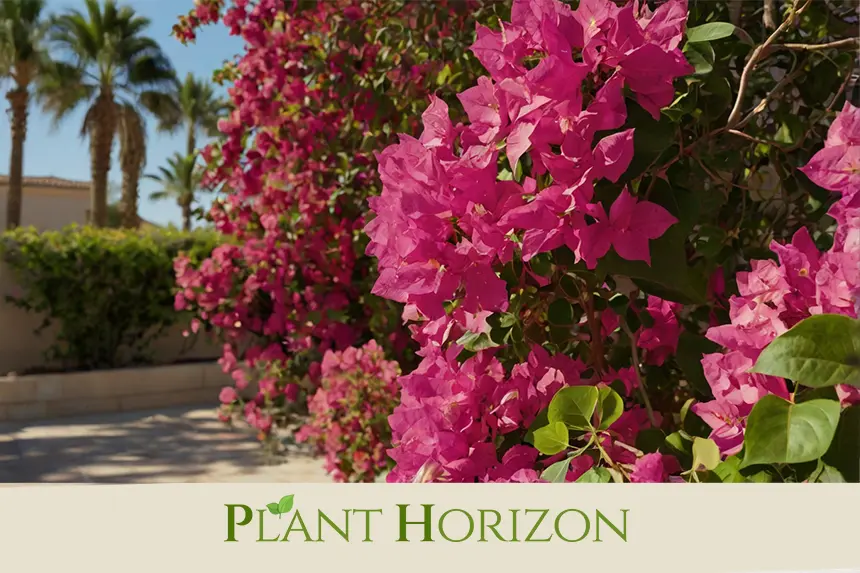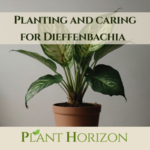Introduction to Bougainvillea
Bougainvillea is a flowering plant native to South America, thriving in warm climates and known for its vibrant, showy flowers. This plant blooms almost half of the year, making it a favorite among gardeners and enthusiasts worldwide. Its scientific name is Bougainvillea glabra, and it is commonly referred to as Bougainvillea in English. This versatile plant can be cultivated either as a climbing vine in the garden or as a small, compact bush in a pot, making it suitable for various gardening styles and spaces.
When grown in the garden, Bougainvillea can reach impressive heights, sometimes growing up to 5 meters. Unlike many plants, its growth pattern is not vertical but rather spreading and trailing. This unique climbing habit adds a dramatic and ornamental touch to fences, trellises, and walls, enhancing the beauty of the surrounding environment. Bougainvillea flowers come in a wide range of colors, but the most common hue is pink, although purple, red, white, and orange varieties are also available.
One distinctive feature of Bougainvillea is its paper-thin bracts, which surround the small, inconspicuous flowers. The vibrant bracts are often mistaken for the petals of the flower, but they are actually modified leaves. This is the reason behind the plant’s name, “Bougainvillea,” inspired by the resemblance of its bracts to delicate paper. These bracts, with their rich colors and attractive shape, are what make Bougainvillea such a visually striking plant in gardens.
Bougainvillea Care
We have previously introduced Bougainvillea, and as mentioned, this flower can be grown both in pots and gardens. In both cases, the care requirements are quite similar. Below, we will cover the most important tips for cultivating and maintaining Bougainvillea.
Watering Bougainvillea
As noted earlier, Bougainvillea is native to South America and thrives in warm climates. Typically, it needs to be watered once a week during the summer months, and in winter, you should reduce watering to every two weeks to avoid damaging the plant’s roots.
Before watering, ensure that the soil is completely dry (at least the top 4 cm of the soil in the pot should be dry). If you water the plant when the soil is still moist, it can severely damage the roots.
An important note when watering is to always empty any excess water that collects in the saucer beneath the pot. If water remains there, it can harm the plant’s roots.
Proper Lighting for Bougainvillea
Bougainvillea is a high-blooming plant, so it requires plenty of light for healthy growth. To ensure that your Bougainvillea thrives, it should receive at least 7 to 8 hours of sunlight every day. If you keep it indoors, place it near a south-facing window so that it gets adequate sunlight throughout the day.
If you plan to plant Bougainvillea in the garden, it is best to plant it near a southern or western-facing wall to ensure it gets enough sunlight. During the hot summer days, you should move the plant indoors to protect it from intense sunlight that can damage its leaves.
Ideal Temperature for Bougainvillea
The optimal temperature range for Bougainvillea is between 25 to 35 degrees Celsius, which makes it ideal for cultivation in cities with relatively warm climates. Winter care for Bougainvillea can be more challenging, as it is especially sensitive to cold temperatures.
Try to avoid exposing the plant to temperatures below 15°C, as this can harm the plant and potentially kill it.
If you are growing Bougainvillea in a pot, make sure to bring it indoors during the winter. If it is not possible to move the plant indoors, you can wrap it in a blanket during cold nights to protect it from the chill.
Ideal Humidity for Bougainvillea
Bougainvillea thrives in warm and humid conditions. You can maintain the necessary humidity for the plant by misting it daily or creating a humidity island. It is important to spray water on the plant during cooler times of the day, such as early morning or evening, because misting during hot midday hours can cause the leaves to burn.
Ideal Soil for Bougainvillea

Bougainvillea is not particularly picky about soil and can grow well in most types of soil. However, soil that is rich in both organic and mineral content can significantly boost the plant’s growth, ensuring that it meets all of its nutritional requirements for healthy growth and blooming.
One key consideration is the soil’s drainage. Using soil with poor drainage can lead to root rot and eventually kill the plant. It is essential to ensure that the soil is well-draining to avoid waterlogging, which can damage the roots.
You can use pre-packaged soil for houseplants or a mix of sand, gravel, and clay for Bougainvillea. Be sure to pay close attention to the soil’s drainage capacity.
Another important factor for Bougainvillea soil is its acidity. The soil’s pH should be between 5 and 6. Therefore, avoid using alkaline soil for Bougainvillea, as it can negatively affect the plant’s growth and health.
Fertilizing Bougainvillea
Bougainvillea doesn’t have strict fertilizing requirements, but feeding it can help promote faster growth and more abundant blooms, especially if you want it to thrive during the growing season. It is most beneficial to fertilize the plant during the spring and summer when it is actively growing and flowering.
For Bougainvillea planted in pots, it’s best to use a water-soluble fertilizer. These fertilizers are easier for the plant to absorb, and they typically come with clear instructions regarding the dosage. Follow the recommended amount on the packaging carefully. Over-fertilizing, especially with water-soluble fertilizers, can cause nutrient imbalances and lead to root burn. A general guideline is to fertilize once every 4 to 6 weeks during the growing season, but this can vary depending on the specific fertilizer brand.
For Bougainvillea planted in the garden, granular fertilizers are a better choice. Granular fertilizers release nutrients slowly over time, which can provide a more steady source of nutrition for the plant. You can apply granular fertilizers around the base of the plant, making sure to follow the instructions on the package to avoid applying too much. Again, do not over-fertilize, as excessive amounts of fertilizer can harm the plant. The goal is to provide just enough nutrients to support healthy growth without overwhelming the plant.
It’s important to note that while Bougainvillea benefits from feeding during its active growth period, fertilizing too often or using too much fertilizer can cause “fertilizer burn.” This happens when the roots absorb too many nutrients, leading to the browning or yellowing of the leaves and stunted growth. Therefore, it’s crucial to fertilize in moderation, keeping a careful balance between providing adequate nutrients and preventing excess.
Also, avoid fertilizing Bougainvillea during its dormant period in the winter. During this time, the plant’s growth slows down, and feeding it unnecessary nutrients can lead to poor health.
When to Repot Bougainvillea
The timing for repotting your Bougainvillea depends on how much the plant has grown. A good indicator that it’s time to repot is when you notice the roots of the plant starting to protrude from the drainage holes of the pot. At this point, the plant may be root-bound, and repotting is necessary to allow it to continue growing healthily.
When choosing a new pot, it’s important to consider the size carefully. Many plants, including Bougainvillea, tend to grow better and faster in smaller pots. This is because in larger pots, the plant focuses more on root development and less on above-ground growth. In an overly large pot, the plant’s energy goes into expanding its root system, and it may take much longer for the above-ground growth to catch up. For this reason, it’s best to select a pot that is only slightly larger than the current one, ensuring that the roots have enough space to grow but the plant can focus on foliage and flower production. Avoid opting for a pot that is excessively large, as this could delay the plant’s growth.
Pruning Bougainvillea
Unlike most plants, Bougainvillea requires regular pruning to maintain its health and appearance. If not pruned regularly, the plant’s flowering can be disrupted, and large thorns may begin to grow on the stems. Additionally, pruning removes excess branches, creating space for new flowers to grow, encouraging a fuller and more vibrant display.
If you plan to prune your Bougainvillea, it’s best to do so after it has finished flowering. Pruning during the blooming period can interfere with flower production. Ensure you use the proper tools, such as sharp pruning shears or scissors, to avoid damaging the plant. A clean cut will help the plant heal quickly and encourage healthy new growth.
Pruning Bougainvillea can be a somewhat challenging task, as the plant tends to grow quickly and vigorously. If you’re not confident in your pruning skills, it’s a good idea to hire a professional gardener who can do the job properly without harming the plant. They will also know how much to trim to maintain the plant’s shape and promote its best growth. Regular pruning not only helps the plant look neat and tidy but also ensures a healthy and continuous blooming cycle.
Bougainvillea Flowering
Many people who cultivate Bougainvillea do so primarily for its beautiful flowers. If you are one of these individuals, you should know that Bougainvillea typically blooms twice a year: once in early spring and again in mid-summer.
To encourage better flowering, it’s important to use potassium-rich fertilizers several times during the spring and summer. Additionally, regular watering during these seasons will help the plant produce more flowers. Don’t forget to prune the plant, as removing excess branches will allow the plant to channel more energy into flower production.
Gardener’s Tip for Increased Flowering
Interestingly, some gardeners use a technique to encourage even more blooms from the plant. Here’s how it works:
For a period of 1 to 3 months, the gardener withholds water from the plant, causing it to experience a form of drought stress. During this time, the plant may appear to be on the verge of dying. Once this period ends, the gardener suddenly provides an abundance of water, which triggers the plant to produce an impressive number of flowers as it attempts to scatter its seeds.
This method can be effective in encouraging more flowers, but it’s important to note that if you’re not experienced with it, it may be risky. The stress could potentially harm or even kill the plant if not done correctly. Therefore, only attempt this if you’re confident in your gardening skills or consider consulting a professional.
Bougainvillea Diseases and Problems

Bougainvillea, like any other plant, can experience various issues related to pests, diseases, or environmental conditions. To ensure the long-term health and vitality of your bougainvillea, it’s crucial to address any problems as soon as they arise. Here, we will provide a detailed explanation of some of the most common issues and how to resolve them effectively.
Yellowing of Bougainvillea Leaves
Yellowing leaves on bougainvillea can occur for several reasons, most commonly due to pests or improper watering practices. Pests, such as aphids, mealybugs, or spider mites, can cause damage to the leaves, resulting in yellowing. These pests suck the sap from the leaves, weakening them and causing the discoloration. To check for pests, thoroughly inspect the undersides of the leaves and the stems for tiny insects or webs. If you detect any, it’s essential to treat the plant with an appropriate pesticide or miticide. You can also rinse the leaves gently with water to remove pests and their eggs.
Another common cause of yellowing leaves is overwatering. Bougainvilleas are relatively drought-tolerant plants that do not thrive in overly moist conditions. When the plant receives too much water, the roots may become waterlogged, preventing proper nutrient absorption. The excess moisture can also lead to root rot, further contributing to yellowing leaves. To address this issue, it’s essential to adjust your watering routine. Ensure that the soil dries out between waterings, and always allow the water to drain properly to avoid water accumulation at the roots. If the yellowing persists despite changes in watering practices, you may need to repot the plant and check for any signs of root rot, trimming away any damaged roots.
Leaf Drop
Leaf drop is another common issue with bougainvillea, and it can occur for several reasons. Temperature stress is one of the most significant factors. Bougainvilleas are warm-weather plants and are highly sensitive to cold temperatures. If the plant is exposed to drafts or sudden temperature fluctuations, especially in colder environments, it can shed its leaves as a way to cope with stress. In this case, moving the plant to a more stable, warmer environment will help it recover and prevent further leaf loss.
Additionally, environmental changes, such as relocating the plant to a different spot, can also trigger leaf drop. Bougainvilleas are sensitive to changes in their surroundings, so when you move them, they may temporarily shed their leaves in response. To prevent this, it’s advisable to place the plant in a location with consistent conditions, including temperature and light, and avoid sudden changes in its environment.
Another potential cause for leaf drop is the presence of pests or fungal infections, which can weaken the plant and cause it to drop its leaves. Mites, fungi, and bacteria can infect bougainvilleas and lead to leaf loss. If you notice unusual spots, discoloration, or mold-like growths on the leaves, it’s crucial to check for any pests or signs of infection. In the case of pests or fungi, applying an appropriate fungicide or pesticide is necessary. Be sure to treat the plant thoroughly, following the manufacturer’s instructions for the best results.
Tiny Mites and Pests Under the Leaves
If you notice tiny mites or small, flying insects under the bougainvillea’s leaves, this could be a sign of a mealybug infestation. Mealybugs are soft-bodied pests that can attack a variety of plants, including bougainvilleas. They feed on the plant’s sap, causing the plant to become weakened, leading to yellowing leaves and poor overall health. Mealybugs can also cause a sticky residue, which attracts mold and creates a more significant problem for the plant.
To address this issue, it’s essential to identify and treat the infestation early. Insecticidal soaps or specialized mealybug treatments can be used to get rid of these pests. If you prefer an organic option, a mixture of water and mild dish soap can also help kill the insects when sprayed directly on the affected areas. After treatment, be sure to regularly check for any remaining pests and reapply the treatment as needed. Pruning affected areas can also help reduce the spread of pests and encourage new growth.
Burnt Spots on Leaves
Bougainvilleas are sun-loving plants, but excessive sun exposure, particularly during the hottest part of the day, can lead to sunburn on the leaves, resulting in brown or yellow burnt spots. This is particularly noticeable if the plant has been exposed to intense, direct sunlight for long periods during extremely hot weather. The plant’s leaves are delicate and can easily burn if they are exposed to too much sun, especially if they are not accustomed to such conditions.
To prevent this issue, ensure that bougainvillea is placed in an area where it can receive filtered sunlight during the hottest parts of the day, especially in summer months when the sun is most intense. On scorching days, it’s advisable to either move the plant to a shaded location or provide some protection from the direct sunlight using a sheer curtain or shade cloth. This will protect the leaves from heat stress and prevent further sunburn.
Additionally, if the plant has already experienced sunburn, it’s essential to avoid exposing it to more direct sunlight until it has had time to recover. Trim any severely damaged or burnt leaves to help the plant focus its energy on healthy growth. Proper care in the form of adequate hydration and sunlight will help your bougainvillea heal and continue thriving.
Fading Leaves or Flowers
Fading or pale leaves and flowers are often a sign of inadequate light. Bougainvilleas need a significant amount of sunlight to thrive and produce vibrant flowers. If the plant is not receiving enough light, it will struggle to produce the vivid colors it’s known for, and its overall health may deteriorate. Inadequate light causes the leaves to become pale and the flowers to lose their intensity.
To solve this issue, move your bougainvillea to a brighter location where it can receive 7 to 8 hours of direct sunlight per day. Ensure that the location is well-lit, and avoid placing the plant in shaded areas where it might not get the full amount of sunlight it needs. If moving the plant to a sunnier spot is not an option, you can also supplement its light with a grow light to ensure it receives the proper amount of light, especially during cloudy days or in winter when natural sunlight might be limited.
In some cases, the plant may also require additional nutrients to encourage better flowering and leaf color. Regular feeding with a balanced fertilizer that includes essential micronutrients like magnesium and iron can help improve the plant’s health and vitality, contributing to more vibrant leaves and flowers.











